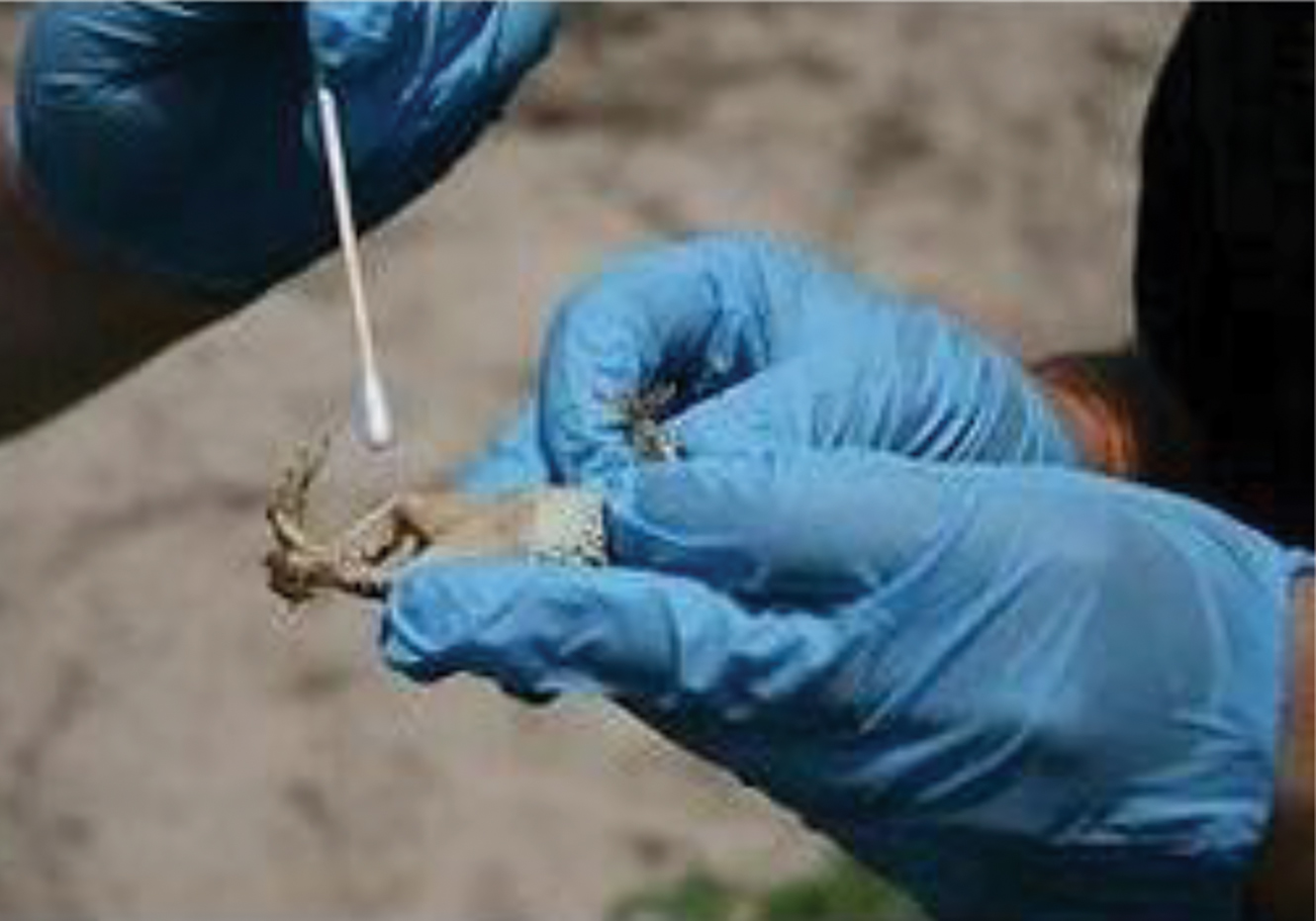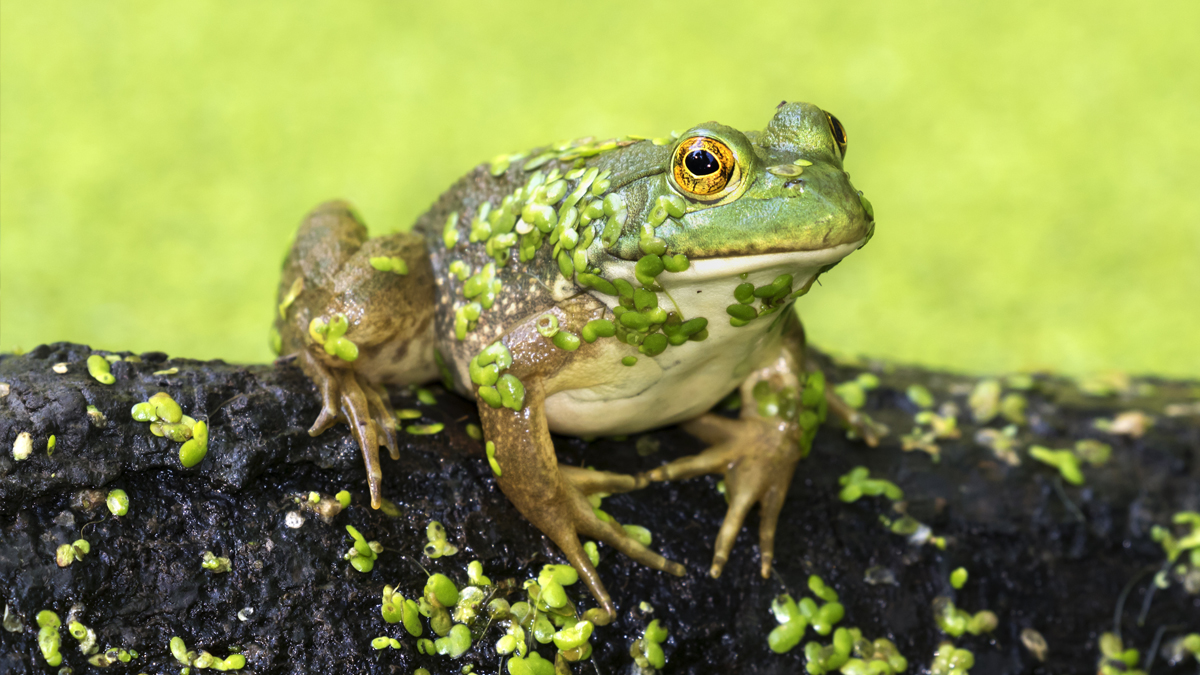Citizen Science
Hop Into Spring With Amphibian Citizen Science
In 1995 Minnesota middle school students observed frogs with malformations (such as additional or missing limbs). The students and their teacher took photographs of the malformations, collected data, and shared the information with state officials. Since that time, amphibian malformations have been observed across the United States and Canada. Scientists found that a number of factors contribute to amphibian malformations, including manmade chemicals (such as pesticides), UV radiation, and parasites (see “Additional Resources: USGS update on malformed frogs in Minnesota”).
Across the globe, amphibians continue to experience challenges that are resulting in population declines. Today, roughly 30% of all amphibians face extinction. Habitat loss and pollution are two contributing factors related to global amphibian decline. This is concerning as amphibians serve as a barometer of environmental health and perform important ecological services (such as consuming mosquitoes). A major challenge facing amphibians is the Chytrid fungus. The Chytrid fungus (short for Chytridiomycosis) is a devastating fungal infection that is capable of compromising the amphibian immune system; the fungus is known to impair breathing and eating capabilities in amphibians.
Students can engage in meaningful field work by participating in the Amphibian Conservation and Education Project (ACEP). In the ACEP, students will analyze water quality and swab amphibians to test for the Chytrid fungus (see Figure 1). Student data are used by conservation biologists to survey the species impacted by Chytrid and also to determine the geographic occurrence of the disease. Through engagement in the ACEP, students experience real-world science, contribute to scientific discovery, and ultimately make a positive difference in the world.

An amphibian is swabbed to test for the Chytrid fungus as part of the Amphibian Conservation and Education Project.
Project goal: To investigate how the Chytrid fungus affects amphibians
Your task: Analyze water quality and swab amphibians to test for the Chytrid fungus
Science discipline: Life and Environmental Science
Omaha’s Henry Doorly Zoo and Aquarium coordinates the ACEP. Numerous project resources are available including: (1) an online protocol packet, (2) a getting started video overview, (3) an online form to submit data, (4) an amphibian education curriculum, and (5) sampling kits (see “Helpful Project Links”). It is important to view the getting started video and review the project protocol packet as these resources contain helpful guidance, tips, and safety information.
Materials you will need:
- sampling kit (see “Project Protocol Packet” for materials needed; the sampling kits can be purchased from the zoo)
- GPS-enabled digital camera
- field guide to identify amphibians
- hip waders
- dip nets
- data forms (1 form for each sample collected) (see the “Project Protocol Packet”)
- clipboards
At the field site, students can be organized into groups, and each student can be assigned a role. For example, some students can engage in water quality testing; some can collect and swab amphibians; and some can help record data and take photographs. There will be ample tasks for all students to take part and have a meaningful role in the process of field data collection. The field data forms can be found in the “Project Protocol Packet” (see “Helpful Project Links”).
Once an amphibian has been caught in the net, students take a picture of the dorsal side of the amphibian. Then, using a sterile cotton swab, students swab the ventral surface of the organism 20 times. Students label a tube, place the swab in the tube, and secure the lid. They then place the tube in a sealable plastic bag. The amphibians can be released in the same location where they were found. It is critical that any student handling the organisms wear clean, powder-free vinyl gloves; additionally, a fresh set of gloves are required to handle each individual amphibian. The data gathered in the field can then be recorded and submitted by using the online data submission form (see “Helpful Project Links”).
After participating in this exciting project, students may be interested in additional amphibian- related citizen science projects. The FrogWatch USA and HerpMapper citizen science projects can provide rewarding real-world science experiences (see “Additional Amphibian Citizen Science Projects”). There are also a number of statewide amphibian monitoring citizen science projects; check with your state wildlife agency or department to learn more about regional amphibian conservation projects.
Spring is a spectacular season for engaging in citizen science. A number of global citizen science events will be taking place this spring, including opportunities to celebrate the 50th anniversary of Earth Day with citizen science (see “Upcoming Events”). The locally engaged, globally connected citizen science events provide further extensions for students to immerse and engage in real-world science. Enjoy a spring season of citizen science and discovery with your students!
Amphibian Conservation Education Project (ACEP) at a glance
Jill Nugent (jillfnugent@gmail.com) teaches science online; engages educators in citizen science experiences for the classroom, schoolyard, and beyond; and serves on the SciStarter Team. Follow SciStarter on Twitter: @SciStarter.

This column is the result of a partnership between SciStarter and the National Science Teaching Association. For more information about SciStarter and other citizen science projects, please visit www. scistarter.org.
Citizen Science Earth & Space Science Life Science Middle School



